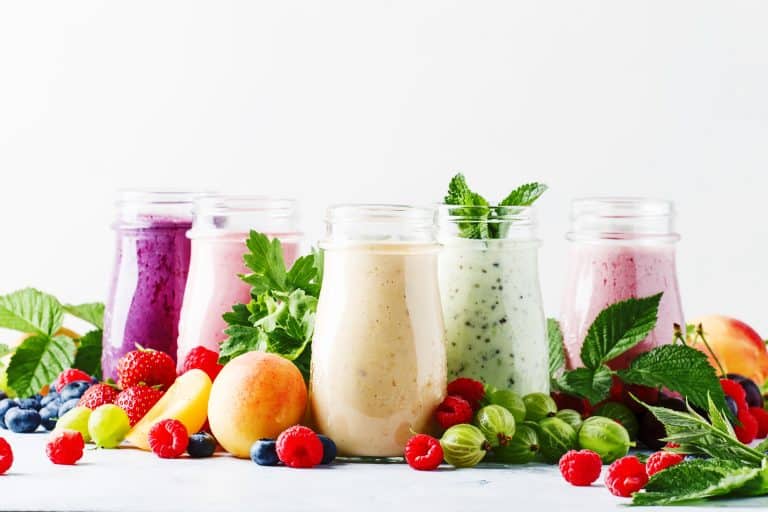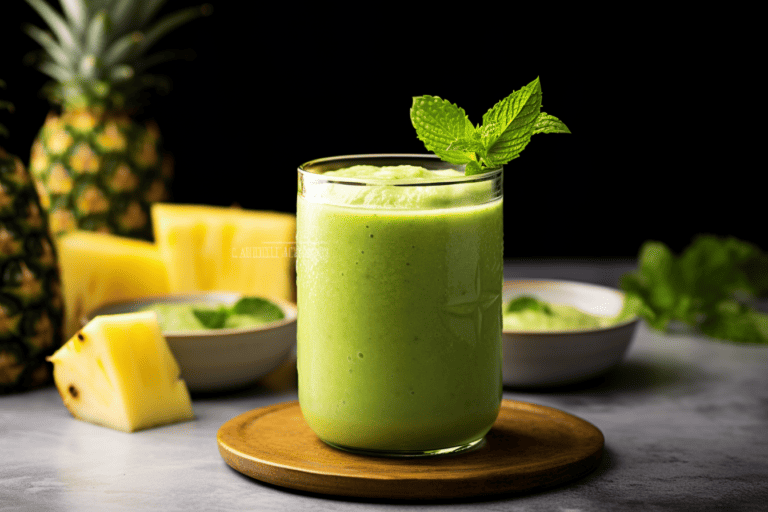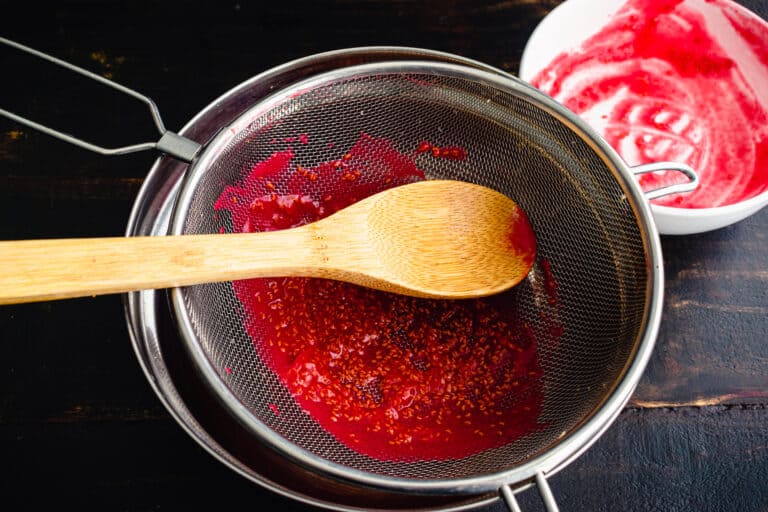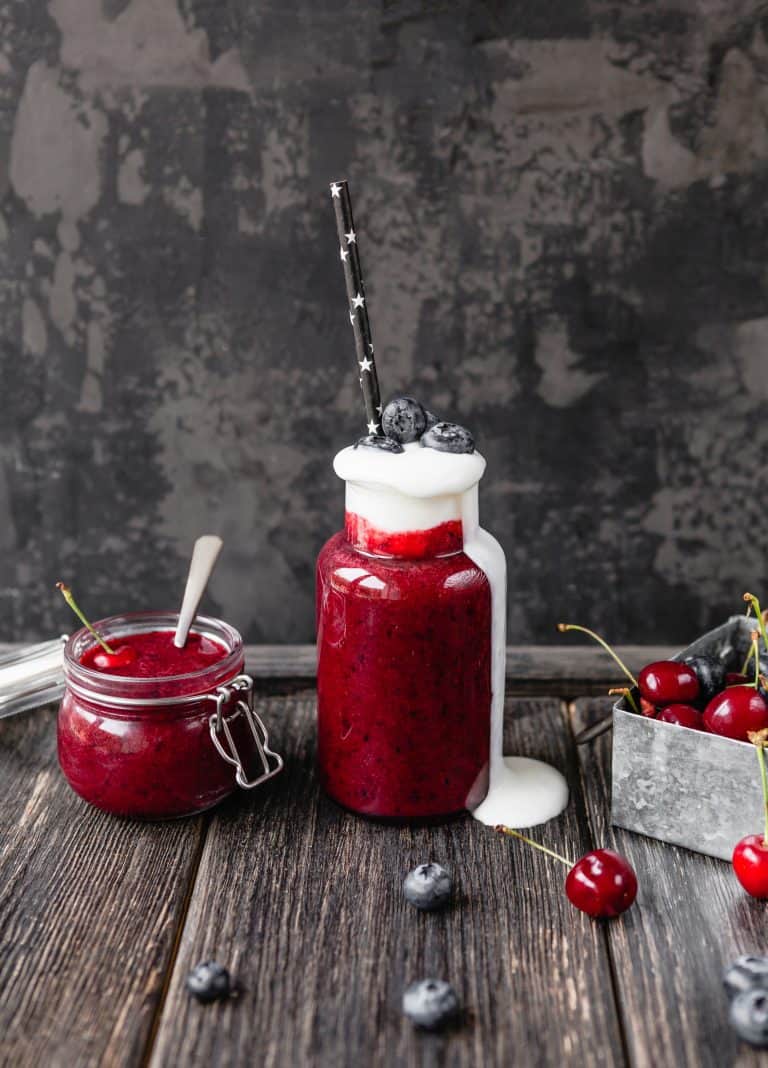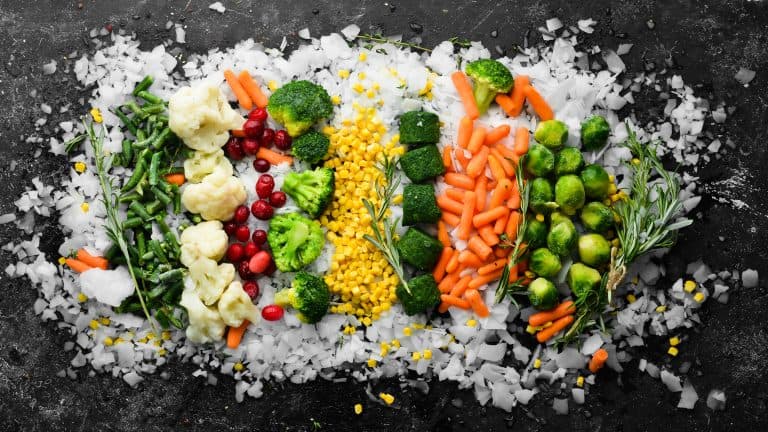How to Use Bee Pollen in Smoothies
Disclosure: This post may contain affiliate links, meaning I get a commission if you decide to make a purchase through my links, at no cost to you.
Learn how to use bee pollen in smoothies with our ultimate guide!
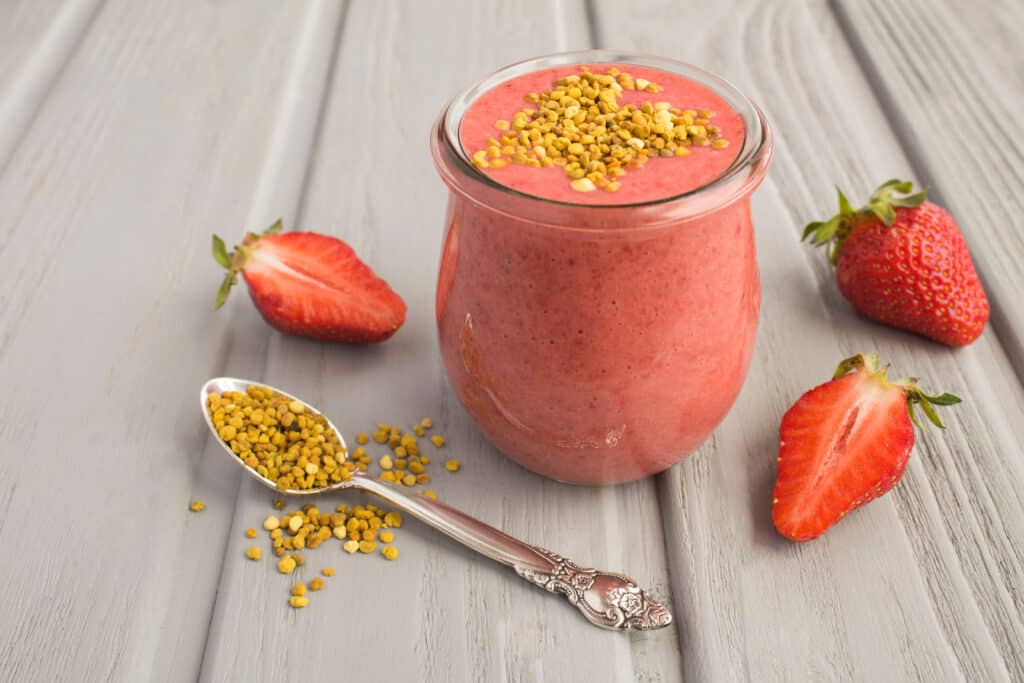
Bee pollen has been buzzing around the health food scene for quite some time, and for good reason. This all-natural product, collected by worker honey bees from flower pollen, is packed with essential nutrients, vitamins, and minerals that can significantly enhance your energy levels, immune function, and overall well-being.
As the 21st century progresses, more people are discovering the powerful benefits of incorporating bee products, like bee pollen, into their daily diets.
One of the most delicious and convenient ways to enjoy bee pollen is by adding it to your favorite smoothies. Not only do these healthy concoctions taste fantastic, but they also provide an excellent opportunity to reap the many health benefits of this ancient superfood. In this article, we’ll delve into the world of bee pollen, exploring its rich history, nutrient composition, and potential health benefits.
We’ll also share tips on purchasing high-quality bee pollen and how to use it in a variety of smoothie recipes, from classic banana smoothies to energizing green concoctions.
So, whether you’re looking to boost your immune system during allergy season, improve your athletic performance, or simply add a new whole food to your repertoire, bee pollen smoothies are a great addition to your routine.
Grab your blender, a jar of bee pollen from your local health food store or farmers market, and let’s embark on this exciting journey towards better health and wellness together!
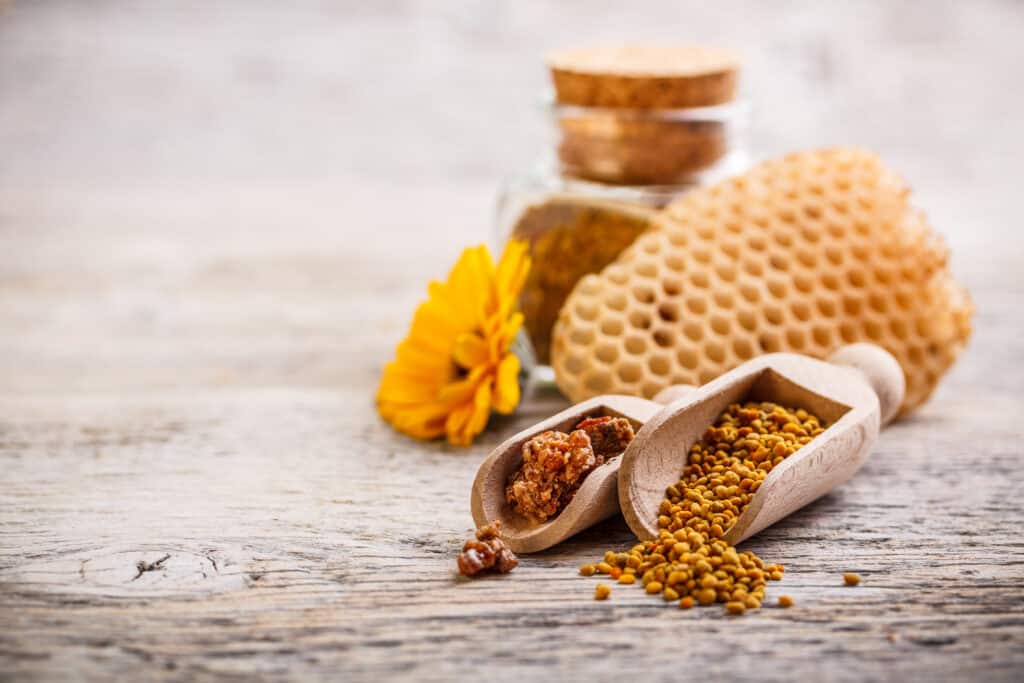
Understanding Bee Pollen
How it’s collected by bees
Worker bees are responsible for collecting flower pollen to create bee pollen. These industrious insects use their legs to gather the pollen into a pollen basket, forming tiny granules. As the worker bees return to the hive, they mix the pollen with bee secretions, including a small amount of nectar and enzymes, which help to preserve the pollen’s enzymes and nutritional value. Beekeepers then carefully collect these granules using pollen traps without harming the bees or the hive.
Nutrient composition
Vitamins
Bee pollen is an excellent source of essential vitamins, including vitamin A, B-complex vitamins, vitamin C, vitamin D, vitamin E, and vitamin K. The high vitamin C content makes it particularly beneficial for immune capabilities and overall health.
Minerals
The natural product is abundant in trace minerals, such as calcium, phosphorus, magnesium, potassium, and iron, which support vital organ function and overall wellness.
Proteins and amino acids
Bee pollen contains a high amount of antioxidants and is rich in proteins, boasting all essential amino acids that the human body needs for proper functioning. It is even believed to have more protein per serving than many animal products.
Fatty acids
This remarkable substance is also a source of essential fatty acids, including omega-3 and omega-6, which are vital for maintaining a healthy heart and brain function.
Carbohydrates
Bee pollen consists of various carbohydrates, including natural sugars and dietary fiber, which provide energy and support digestion.
Potential health benefits
Boosting immune system
With its high vitamin C content and the presence of antioxidants, bee pollen can help to strengthen the immune system and protect against free radicals, ultimately preventing illness and promoting overall health.
Reducing inflammation
Bee pollen possesses anti-inflammatory properties, which can help to alleviate inflammation in the body and support joint health.
Supporting digestion
The dietary fiber found in bee pollen aids digestion and can even act as a natural appetite suppressant, making it an excellent addition to weight loss programs.
Enhancing energy levels
The carbohydrates, proteins, and vitamins in bee pollen provide a natural energy boost, making it an ideal ingredient for breakfast smoothies or a pre-workout snack.
Precautions and possible side effects
Allergies
Some individuals may experience allergic reactions to bee pollen, especially those with pollen allergies. Symptoms can range from mild, such as itching or shortness of breath, to severe allergic reactions, including anaphylaxis. It’s crucial to start with a very small amount of bee pollen to test for any allergic reactions.
This happened to me when I decided it was okay to use a large amount of bee pollen in my morning smoothie. Even though it wasn’t allergy season, you would have thought it was with the way my body reacted! I had full-blown allergies just like I do when the trees bloom in TN, so start small!!
Contamination risks
Bee pollen may contain traces of pesticides or other contaminants if collected from a non-pesticide-free environment. To minimize this risk, purchase your bee pollen from a reputable source, such as a local health food store or farmers market, that guarantees high-quality, pesticide-free products.
Interactions with medications
Bee pollen may interact with certain medications, such as blood thinners and anti-inflammatory drugs. Pregnant women and individuals taking prescription medications should consult with their healthcare practitioner before adding bee pollen to their diet.
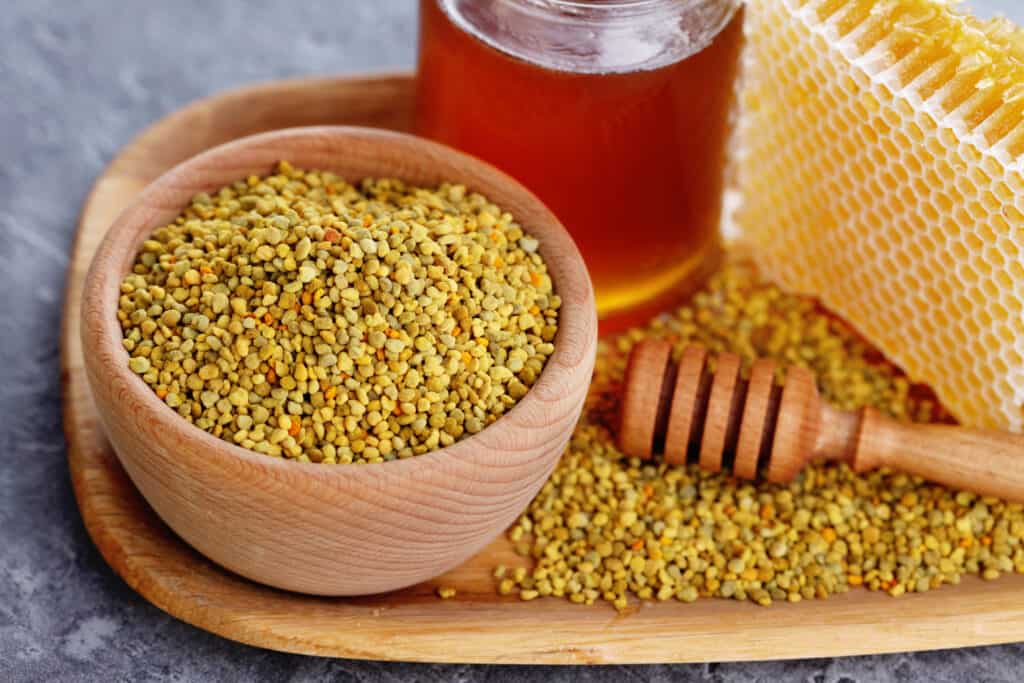
Choosing High Quality Bee Pollen
Factors to consider when purchasing
Source
When purchasing bee pollen, it’s crucial to select a product that comes from a reputable and environmentally conscious supplier. Look for local bee pollen or bee products sourced from farmers markets or local health food stores, where you can inquire about the bees’ habitat and the harvesting process. Australian bee pollen, for example, is known for its purity and quality due to the country’s strict regulations on beekeeping and pesticide use.
Processing methods
High-quality bee pollen should be minimally processed to preserve its nutritional benefits. Avoid products that have been heated or overly processed, as this can destroy the pollen’s enzymes and reduce its overall nutritional value. Raw honey is an excellent example of a minimally processed bee product that retains its health-promoting properties.
Certification and third-party testing
To ensure you’re getting a safe and high-quality product, look for bee pollen that has been certified by a recognized organization or has undergone third-party testing. This guarantees that the product has met strict quality standards and is free from contaminants.
Best storage practices
Temperature and humidity
Store your bee pollen granules in a cool, dark place, such as a pantry or cupboard, away from direct sunlight and heat. Proper storage conditions will help preserve the nutritional content and prolong the shelf life of the product.
Shelf life
Bee pollen can last up to two years if stored correctly. However, for the best nutritional benefit, it’s recommended to consume the product within one year of purchase. Always check the expiration date on the packaging and pay attention to any changes in color, texture, or smell that may indicate spoilage.
By carefully selecting high-quality bee pollen and following proper storage guidelines, you can maximize the health benefits and enjoy this remarkable superfood in your smoothies and other recipes.

Incorporating Bee Pollen into Smoothies
How to use bee pollen in smoothies
Appropriate serving sizes
Begin by incorporating a small amount of bee pollen into your smoothies to gauge your body’s response and ensure you don’t experience any adverse reactions. Starting with a quarter to half a teaspoon is a good rule of thumb, gradually increasing to a full tablespoon of bee pollen as your body becomes accustomed to it.
Mixing techniques
To get the most nutritional benefit from your bee pollen smoothie, blend the bee pollen granules thoroughly with the rest of your smoothie ingredients. This helps to break down the granules and release their nutrients, making them more easily absorbed by the body.
Recipes
Energizing Green Smoothie
- 1 cup spinach
- 1 banana
- 1 tablespoon almond butter
- 1 tablespoon chia seeds
- 1 tablespoon bee pollen
- 1 cup coconut milk
Immune-Boosting Berry Smoothie (Shown above)
- 1 cup strawberries
- 1 tablespoon bee pollen
- 1 tablespoon raw honey
- 1 cup almond milk
- 1 tablespoon Greek yogurt
- 1 tablespoon flaxseeds
Tropical Detox Smoothie
- 1 cup pineapple
- 1 cup mango
- 1 tablespoon bee pollen
- 1 teaspoon turmeric
- 1 cup coconut water
Chocolate Banana Protein Smoothie
- 1 banana
- 2 tablespoons cocoa powder
- 1 tablespoon bee pollen
- 1 scoop protein powder
- 1 cup almond milk
- 1 tablespoon almond butter
Chia Seed and Bee Pollen Superfood Smoothie
- 1 cup mixed berries
- 1 tablespoon chia seeds
- 1 tablespoon bee pollen
- 1 cup almond milk
- 1 tablespoon coconut oil
Tips for customizing recipes
Adjusting sweetness
If you prefer your smoothies sweeter, add extra bee pollen or a touch of raw honey, which also provides health benefits and notes of honey flavor.
Adding other superfoods or supplements
Feel free to experiment with additional superfoods, such as spirulina, maca powder, or goji berries, to enhance the nutritional value of your smoothie. You can also add supplements like vitamin D or vitamin E to support specific health goals.
Modifying texture
To achieve your desired smoothie consistency, add more or less liquid, such as coconut milk or almond milk. For a thicker smoothie, try adding a scoop of Greek yogurt or a frozen banana.
Incorporating bee pollen into your smoothies is a delicious and convenient way to enjoy the numerous health benefits of this ancient superfood. Remember to start with a small amount and gradually increase your daily intake to experience the full range of nutritional benefits that bee pollen has to offer.
Final Thoughts on How to Use Bee Pollen in Smoothies
Incorporating bee pollen into your smoothies not only adds a delightful touch of natural sweetness, but it also provides a powerful nutrient boost that can enhance your immune system, reduce inflammation, support digestion, and elevate your energy levels.
As a versatile ingredient, bee pollen can easily be combined with other superfoods, supplements, or whole foods, such as fruits and vegetables, to create an array of delicious and healthy smoothies.
Try some out, being careful not to overdo it if you have any type of seasonal allergies (I learned that one the hard way!).
Happy Blending!
Amanda
